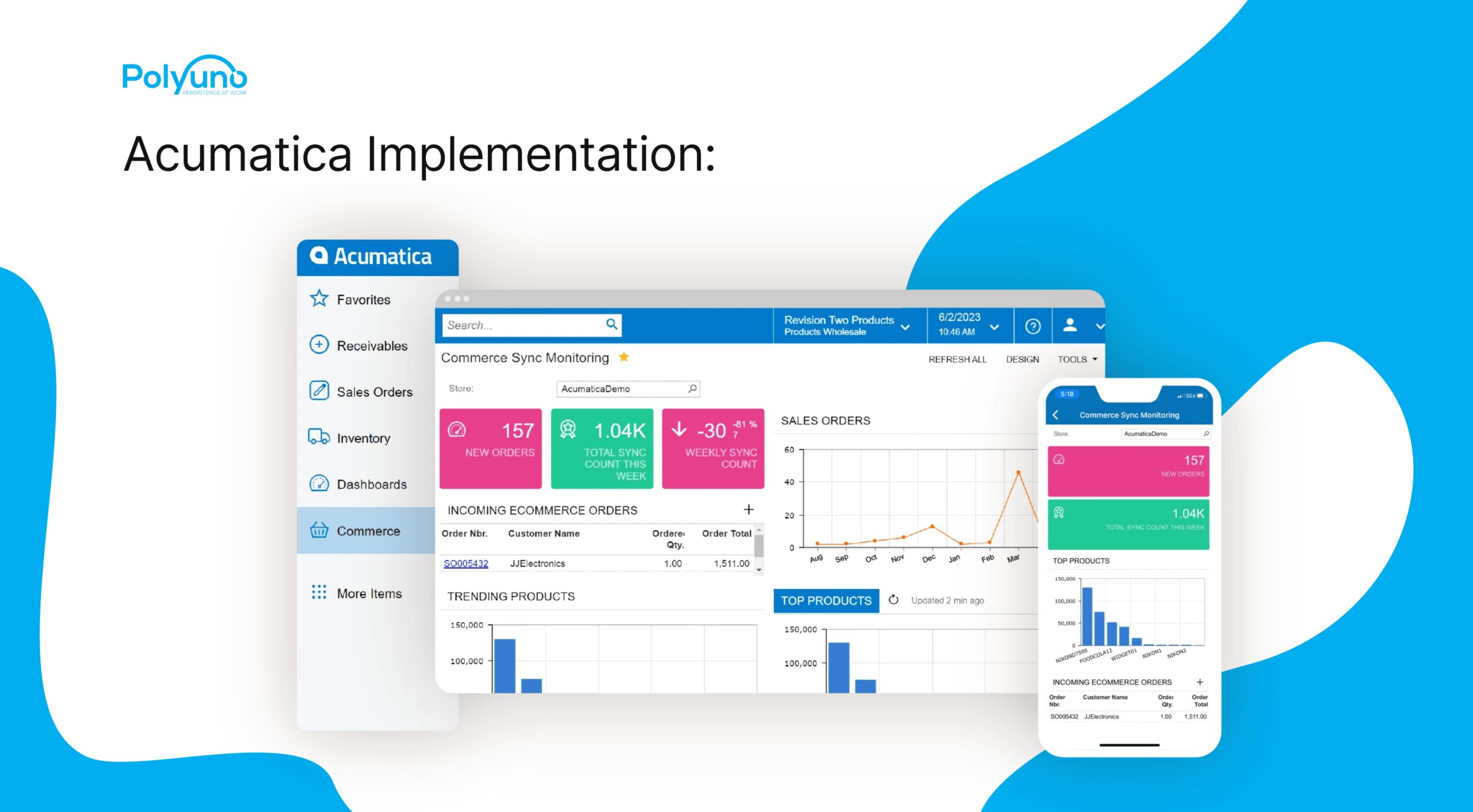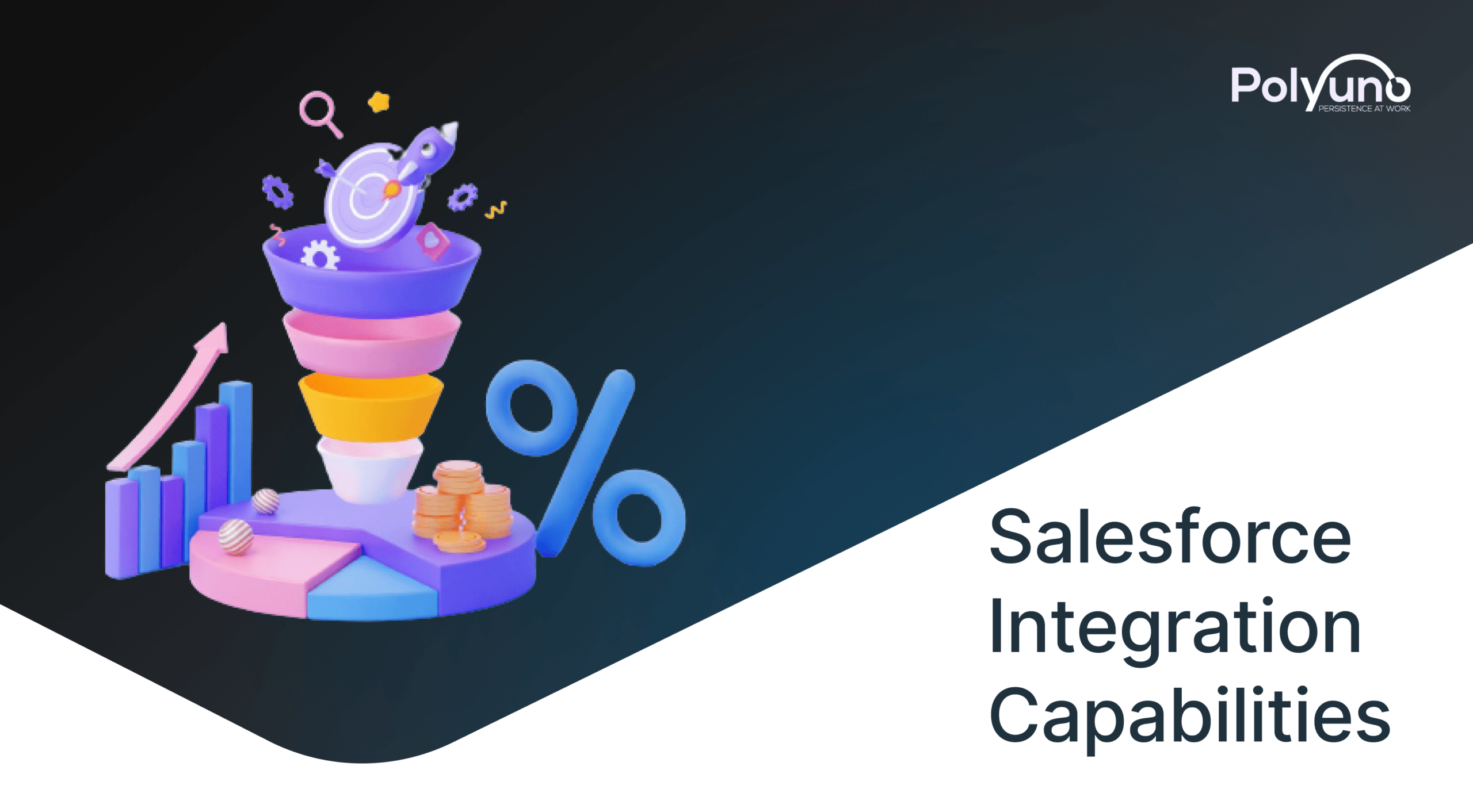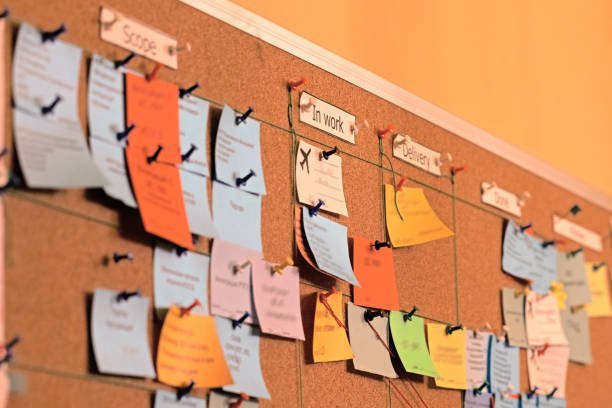
A development methodology determines how the actual tasks of a project are organized and acted on. Organizations often get stuck when deciding on which development methodology to choose.
Agile methodology introduces early delivery, predictable cost, high customer satisfaction, ease of new requirements, and many more. Among all the agile variations, Scrum is by far the most popular and widely adopted Agile methodology.
According to research, 94% of respondents use Scrum in their agile approach. The Scrum process helps companies improve the quality of products according to the changing requirements with a significant rise in productivity.
However, if you are a beginner, Scrum can be a difficult concept to grasp.
In this article, we’re covering all the essential aspects that you need to know about Scrum Framework.
Table Of Contents
- What is Scrum?
- History of Scrum
- What are the important factors of the Scrum Process?
- What are the Scrum Roles?
- What are Scrum Artifacts?
- What are Scrum Events?
- What are the values of Scrum?
- What are the principles of Scrum?
- How does scrum work?
- Why Use Scrum?
- Wrapping Up
TL; DR
- Agile methodology is an umbrella term for several iterative and incremental software development approaches, among which Scrum is the most popular framework.
- The concept of Scrum is to break down large projects into convenient tasks that are accomplished in short iterations. The scrum process is a series of sprints.
- Scrum Teams are self-organizing and cross-functional. The three roles defined in Scrum are Product Owner, Scrum Master, and Development Team.
- The product owner is responsible for maximizing the product. The Scrum Master helps everyone understand the scrum prospects, and the Development Team does the hands-on work of developing and testing the product.
- Scrum defines three artifacts: Product Backlog, Sprint Backlog, and a potentially releasable product increment to help manage work.
- Product Backlog is an ordered list of everything that is needed in the product,
- The Sprint Backlog is the collection of product backlog items selected for delivery in the Sprint, and Increment is the final product.
- Scrum events are some time-boxed meetings that ensure all the members take corrective measures to achieve the desired goal.
- The five Scrum values and principles determine the success of a scrum.
- The Scrum process benefits the company by helping it improve the quality of its products, adapting to the rapidly changing requirements, and providing estimates quickly.
What is Scrum?
Scrum is a lightweight framework used to deliver complex innovative products and services that truly delight customers. It works by breaking down large products and services into small pieces that a cross-functional team can complete in a short time frame.

You can think of it as a collection of roles, events, artifacts used in combination to create iterative work products.
In Scrum, you don’t work in separate groups but you walk as one dedicated team. Instead of working on a project with distant deadlines, you constantly deliver functioning products throughout the cycle.
You don’t use final evaluation but you receive continuous feedback from your customers and improvise your product.
So, Scrum is a flexible way of working in the rapidly changing world.
History of Scrum
To learn about the history of Scrum, we have to go back to the year 1986. In that year, two management experts Takeuchi and Nonaka, introduced the term Scrum.
They published a study in the Harvard business review, which explained that small cross-functional teams produce the best results. They borrowed the name from the game of rugby.
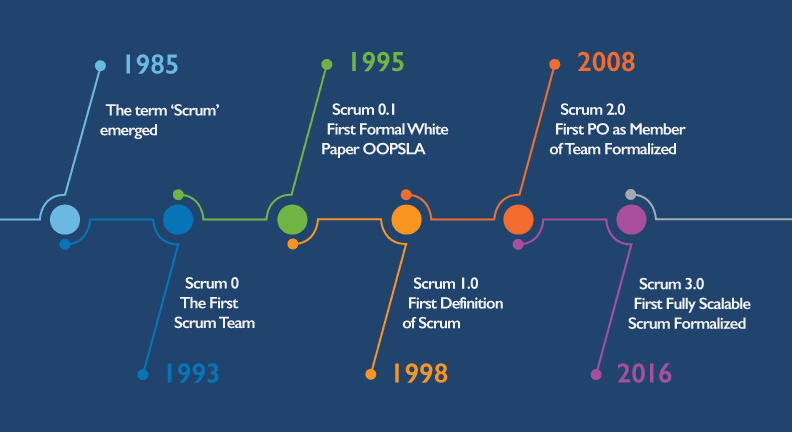
To stress the importance of teamwork to deal with a complex problem, in 1993, Jeff Sutherland implemented the first scrum project at the easel corporation.
After that, software developers Schwaber and Sutherland each came up with their version of Scrum, which they presented at a conference in Austin in 1995. Each Scrum has its roots in the technology and software industries.
Scrum was initially developed for managing and developing products. Currently, it is being used extensively worldwide across every industry.
What are the important factors of the Scrum Process?
Scrum is an evolution of Agile practices. Here we have pinpointed some points that you need to know about scrum:
- Scrum is a flexible methodology that encourages the 12 Principles of Agile Manifesto.
- The starting part of a Scrum is to build the plan listing the requirements of the end-user.
- Scrum takes a unique approach to projects. The scope and timeline are approached iteratively and incrementally.
- Scrum is implemented in short and periodic blocks called sprints, which typically last 2 to 4 weeks. Sprints are carried out back to back. There are no breaks between them.
- Each sprint is a version of the final product that has to be delivered to the clients.
- Teams work together to meet the demand of customers without undermining the quality of the product.
What are the Scrum Roles?
The Scrum Team consists of the Product Owner, Scrum Master and Development Team. The people who fulfill these roles work together closely daily to ensure the smooth flow of information and the quick resolution of issues.
Let’s go through these three roles.
Product Owner
The Product Owner defines what the product will look like and what features it should contain. He or she keeps track of the project’s stakeholder’s expectations, defines and gathers the required tools and resources that the scrum team needs.
In addition, The product owner communicates the project vision to the team to help set priorities.
The tasks of a Product Owner include:
- Coordinate with end users and prioritize their requirements.
- Work with teams for clarifying requirements, reviewing progress, and approving final increments.
- Ensuring project success meeting expectations of end-users.
Scrum Master
Scrum Master is the coach and gatekeeper of the scrum team. They must know Scrum and Agile Software Development.
They help the team perform at its highest level. Scrum Master does this by ensuring everyone in the group understands Scrum theory, practices, rules, and values.
The tasks of a Scrum Master include:
- Serve the product owner by managing the product backlog efficiently.
- Serve the development team in terms of coaching them about the scrum process.
- Supports the organization to increase the effectiveness of scrum.
Development Team
The Development Team consists of professionals who do the hands-on work of developing and testing the product owner put forth.
This team tends to be made up of several cross-disciplinary members. The Development Teams are structured and empowered by the organization to manage and organize their work.
The tasks of a Development Team include:
- Build plans for meeting the goals.
- Decides how to turn the product backlog into product increments.
What are Scrum Artifacts?
Scrum Artifacts are designed to maximize the transparency of essential information so that everybody has the same understanding of the artifact.
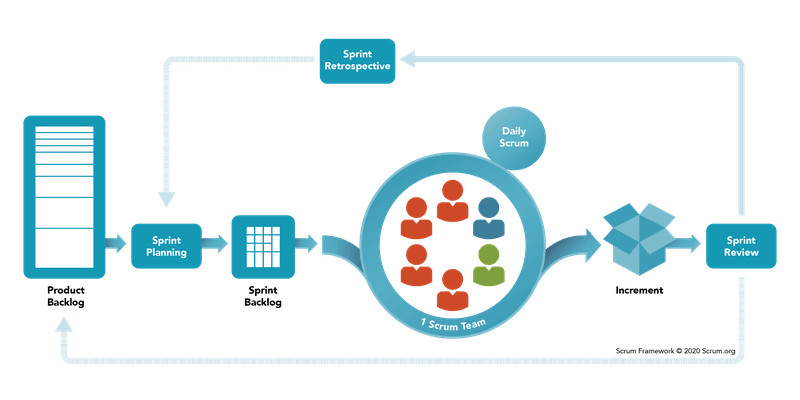
Let’s go through the Scrum Artifacts.
Product Backlog
Product Backlog lists all features, functions, requirements, and fixes that constitute the changes to the product in future releases. It is constantly evolving and is never changing.
The product owner is responsible for the product backlog, including its content, availability, and ordering.
Sprint Backlog
Sprint Backlog is the collection of product backlog items that the team commits to achieve in a given sprint.
The Sprint Backlog makes all the work that the development team identifies necessary to meet the sprint goal.
Increment
According to Scrum Guide, incremental is the sum of all the product backlog items completed during a sprint and the value of the increments of all previous sprints.
The increment must be in usable condition regardless of whether the product owner decides to release it.
Apart from these three, there is another one called Sprint Burndown Chart. It is a graphical way of showing how much work remains in the sprint, typically task hours. It is generally updated in the daily scrum.
What are Scrum Events?
Prescribed events are used in Scrum to create regularity and transparency in the organization. All events are time-boxed events which means that every event has a maximum duration.
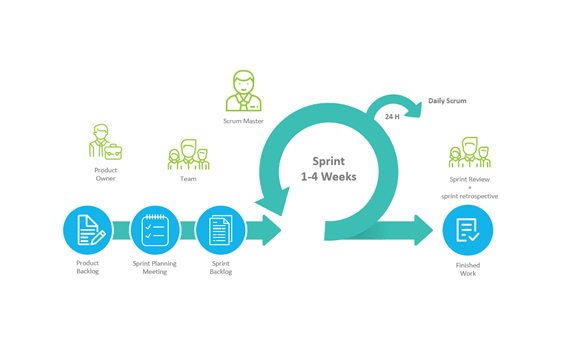
Sprint Planning
During the sprint planning meeting, the entire scrum team collaborates and discusses the work performed in the sprint. The scrum master ensures that the event takes place and attendants understand its purpose.
The meeting answers two questions:
- What needs to be achieved in the upcoming sprint?
- How will the team successfully deliver the product increment?
Daily Scrum
The daily Scrum is a 15-minute time-boxed event for the development team. This meeting takes place every day during a sprint.
The development team uses the daily to assess its progress towards completing the work in the sprint backlog.
Sprint Review
At the end of the sprint, a sprint review is held to inspect the product increment and update the product backlog if needed.
During the sprint review, the team and stakeholders collaborate about what was done in the sprint. Based on the feedback, they updated the product backlog.
The result of the sprint review is a revised product backlog that defines the probable product backlog items for the next sprint.
Sprint Retrospective
During the sprint retrospective, the team reflects upon how things went during the previous sprint and identifies adjustments they could make from now on.
It occurs after the sprint review and before the next sprint planning.
What are the values of Scrum?
Scrum is based on a set of fundamental values. The values provide a code of behavior for scrum teams.
The five values are:
- Commitment: Team members make a personal commitment to achieving team objectives.
- Courage: Team members dare to do the right thing and work on challenging problems.
- Focus: Everyone focuses on the work of the sprint and the goals of the Scrum Team.
- Openness: Team members and stakeholders are open about all of the work and challenges that the team faces.
- Respect: Team members respect each other's ability to be capable and independent.
What are the principles of Scrum?
The three principles of Scrum are Transparency, Inspection, and Adaptation.
Transparency
The team must work in an environment where everyone is aware of the problems that other team members are experiencing. Teams recognize issues that have been present for a long time and are obstructing the team's success.
Inspection
The framework includes frequent inspection points to allow the team to reflect on how the process is working. The Daily Scrum meeting and the Sprint Review Meeting are two of these inspection points.
Adaptation
The team constantly investigates how things are progressing and revises any items that do not make sense.
How does scrum work?
Here’s a 6 step outline of how a scrum process works:
- Step 1: The Product owner creates a product backlog.
- Step 2: Scrum team attends sprint planning meetings to set the sprint goal.
- Step 3: The team meets in the daily scrum to assess the progress of the spring.
- Step 4: At the end of the spring, the product owner organized the sprint review.
- Step 5: After the sprint review, the scrum team gathers up in a sprint retrospective meeting.
- Step 6: The team repeats steps until the desired outcome of the product is met.
Why Use Scrum?
In Software project development, the development cycle encounters various uncertainties in resource allocation, cost optimization, and, most importantly, a sudden change in customer requirements.
Scrum is the solution that is designed to satisfy customers’ needs throughout the project’s development.
Here’s why you should consider Scrum for your project development:
- Ensure a customer-oriented framework.
- Emphasis on business value.
- Provide continuous delivery of value.
- Cope with the changing requirements of customers.
- Provide effective deliverables in a short time.
- Ensure transparency and collective ownership.
- Be more in control of the project schedule and state.
Wrapping Up
By now, you already know how scrum can help you ace your project development. First, try to identify the needs of your business and assess how scrum can fit in your existing process.
PolyUno emphasizes tasks, project schedule, deliverables, and budget to meet customers’ expectations. If you’re looking for a customer-focused agency for software solutions, PolyUno would be the best choice for you.
So, What are you waiting for? Request a quote now!


